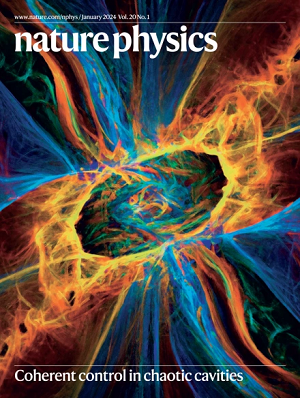Magmatic intrusions in real time
IF 18.4
1区 物理与天体物理
Q1 PHYSICS, MULTIDISCIPLINARY
引用次数: 0

实时岩浆侵入
传统的大地测量技术——例如电子距离测量、钻孔应变仪、倾斜测量和基于卫星的方法——缺乏解决快速岩浆侵入动力学所需的时空分辨率,例如实时岩浆体积的演化和就位。为了解决这个问题,李和他的同事们在Keflavík部署了一个分布式声学传感器,并将一条100公里长的电信光缆——沿着海岸线从Keflavík到Grindavík——转换成一个具有10,000个记录通道的传感阵列。该系统包含一个截止频率为0.01 hz的低通滤波器和一个用于去除共模噪声的空间中值滤波器。当岩浆使地壳变形时,它改变了通过光纤传播的散射光的相位。通过分析这些跨通道的相移,传感装置可以跟踪应变速率并实时绘制地下岩浆迁移图。
本文章由计算机程序翻译,如有差异,请以英文原文为准。
求助全文
约1分钟内获得全文
求助全文
来源期刊

Nature Physics
物理-物理:综合
CiteScore
30.40
自引率
2.00%
发文量
349
审稿时长
4-8 weeks
期刊介绍:
Nature Physics is dedicated to publishing top-tier original research in physics with a fair and rigorous review process. It provides high visibility and access to a broad readership, maintaining high standards in copy editing and production, ensuring rapid publication, and maintaining independence from academic societies and other vested interests.
The journal presents two main research paper formats: Letters and Articles. Alongside primary research, Nature Physics serves as a central source for valuable information within the physics community through Review Articles, News & Views, Research Highlights covering crucial developments across the physics literature, Commentaries, Book Reviews, and Correspondence.
 求助内容:
求助内容: 应助结果提醒方式:
应助结果提醒方式:


